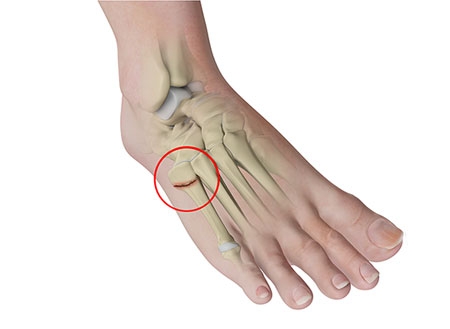As Spring makes its joyful arrival, the runners are pounding the pavement and turning left on the track once again. With running season well underway, the occurrence of stress fractures rears its ugly head. These often misconstrued injuries tend to plague runners long past what their patience can tolerate, especially if not treated appropriately. To better understand the dreaded stress fracture, read on!
Stress fractures are injuries to the bone caused by repetitive stress or predisposing factors such as osteoporosis, malnourishment, or female gender. These types of fractures are most common in the lower body that bears our body weight during activity, but can occur in any bone if enough stress is sustained. This realm of injury ranges from a stress reaction to a full blown stress fracture. A stress reaction is the early irritation of the bone that is not necessarily visible on x-ray. It is usually associated with point tenderness and diagnosed based on the reported symptoms and clinical examination. Sometimes an MRI or a bone scan is ordered to confirm the diagnosis by obtaining more detailed images of the area of concern. A true stress fracture, on the other hand, is demonstrated on x-ray at the location of reported pain. Your physician can take x-rays at regular intervals to gauge the healing over time
Regardless of where you fall on the spectrum of stress injuries, the treatment regimen is generally the same. These injuries require rest, namely avoidance of the repetitive stress believed to have caused the injury. Depending on the severity of the injury, a period of complete non weight bearing using crutches may be warranted. For further protection of the bone as you transition to normal walking, your physician may prescribe a walking boot. This device helps disperse the forces to remove stress from the injured bone. If you have sustained multiple stress fractures, your physician may discuss dietary changes or supplementation of calcium and vitamin D as well as activity adjustment moving forward.
Prevention of stress injuries most often involves activity modification. Starting a new high intensity activity full bore without first easing into the new movement can shock the musculoskeletal system and cause injury. For an activity such as running, a progression should be used. This should start with a run-walk regimen and progress to straight running over the course of several weeks. The general rule of thumb is to increase your running mileage by no more than about 10% each week. This may seem like a painfully slow progression, but you will benefit in the long run when you can continue running pain-free while your ambitious cohorts are sidelined by injury. Appropriate shoes that are regularly replaced can help prevent injury, as can proper form and technique. If you’ve had a pain nagging your running routine, come see one of our orthopedic specialists today.
This blog is written by one of our very own-Morgan. She is a certified athletic trainer working in our clinic with our providers each and every day. She obtained a bachelor's degree in athletic training from Carroll University in Waukesha and a master's degree in Kinesiology from Michigan State University

